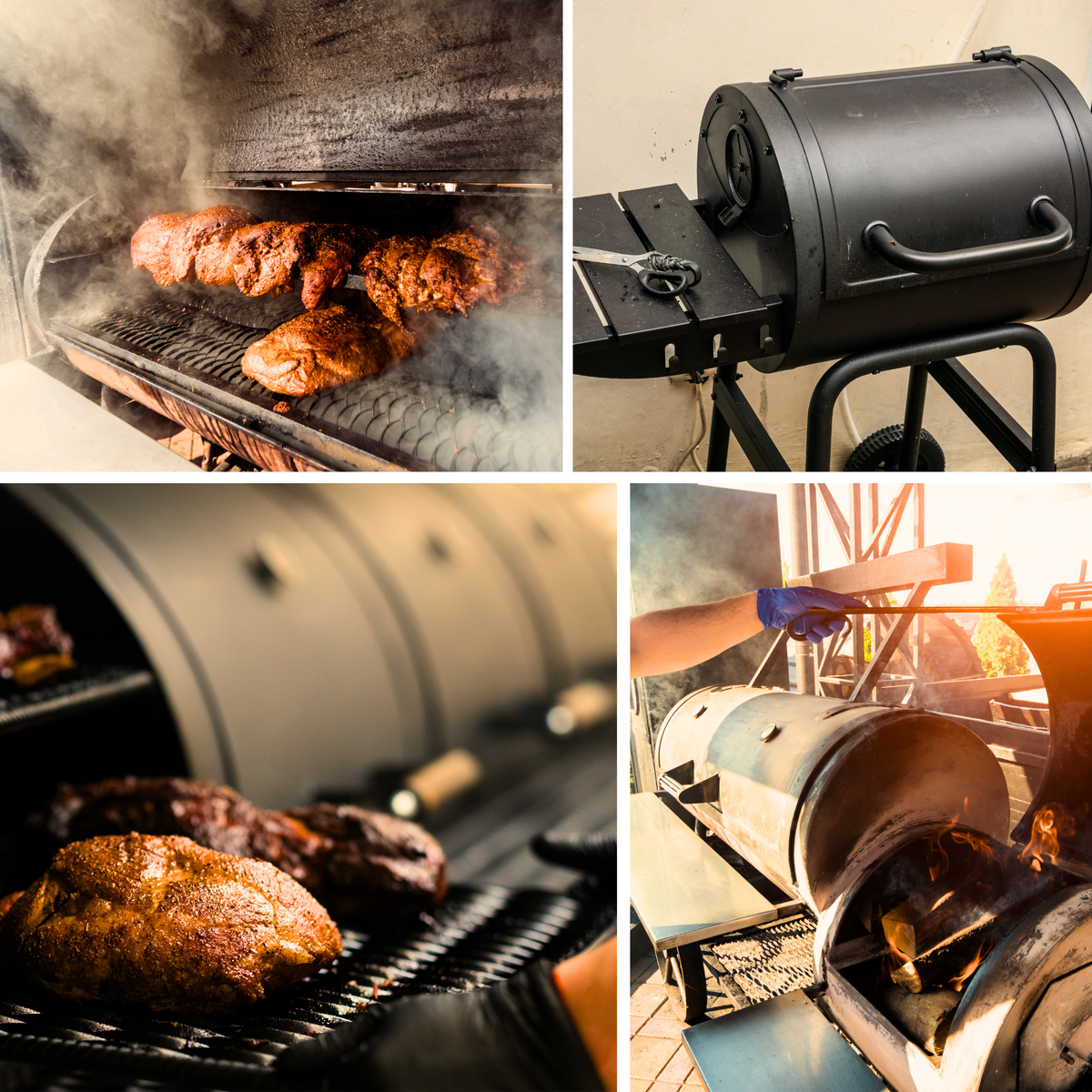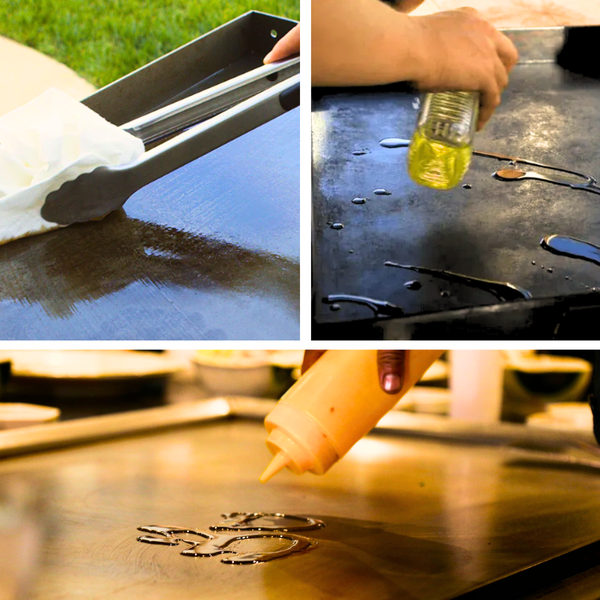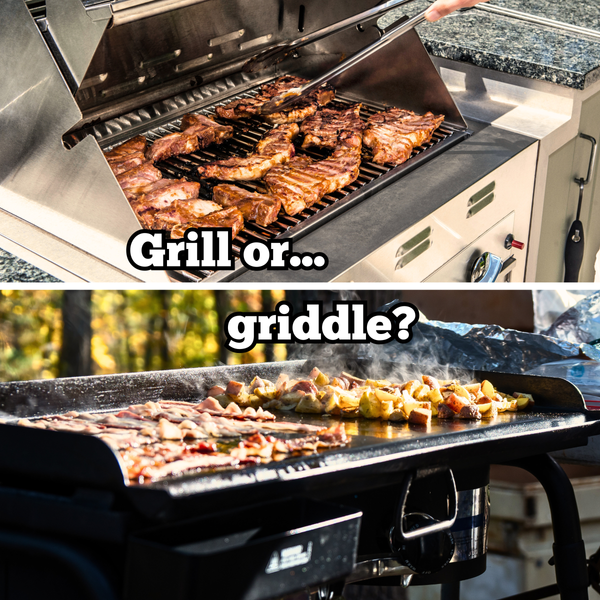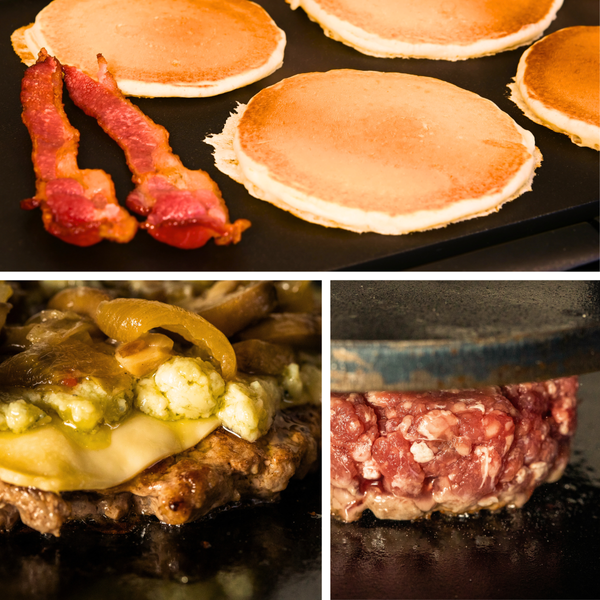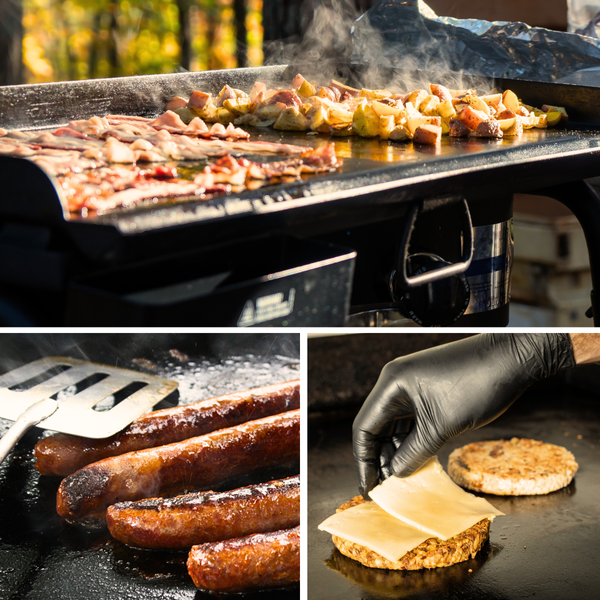Key Takeaways:
- Understand the unique design and functionality of offset smokers.
- Discover the benefits of using an offset smoker for authentic barbecue flavor.
- Learn essential tips for operating an offset smoker effectively.
Offset smokers, often hailed as the traditional workhorses of the barbecue world, have been a staple in the backyards of seasoned pitmasters and casual grill enthusiasts alike. But what is the purpose of an offset smoker, and why do barbecue aficionados swear by them? This comprehensive guide will take you through the ins and outs of offset smokers, from their design to their distinct cooking advantages.
The Anatomy of an Offset Smoker
At first glance, an offset smoker presents a somewhat intimidating appearance with its bulky structure and industrial vibe. Originating from surplus oil pipe and oil drum designs, these smokers are built for serious cooking. The main chamber, where the food is placed, is a long, horizontal barrel with a grill grate. One end of this barrel is connected to a smaller, fire box chamber where the fuel—typically wood or lump charcoal—is burned. The firebox door allows for fire management, while vents control the air intake, providing oxygen to fuel the flames.
How Offset Smokers Work: A Symphony of Heat and Smoke
Offset smokers operate on the principle of indirect heat, which is essential for cooking meat low and slow. The fire box generates heat, and the smoke flows into the cooking chamber, enveloping the meat in a cloud of flavorful wood smoke. This smoke flow is what imparts that sought-after smoke flavor, distinguishing barbecue from other cooking methods. The design ensures consistent heat, as the meat is placed away from direct flames, allowing for even cooking without the risk of burning.
The Fire Management Art
Mastering an offset smoker requires understanding fire management. The pit master must maintain the desired temperature by adding more charcoal or wood chips and adjusting the air intake for good airflow. More oxygen means a hotter fire, while restricting airflow helps retain heat for a cooler cooking environment. This delicate balance is what makes offset smoking both an art and a science.
Offset Smokers vs. Other Smokers
When comparing offset smokers to other smokers like the pellet smoker or the Big Green Egg, the differences are notable. Pellet smokers automate the temperature control process, while ceramic smokers like the Big Green Egg are known for their heavy-duty construction that retains heat well. However, offset smokers offer a more hands-on approach, which many barbecue enthusiasts find rewarding.
The Flavor Factor
The smoke flavor that offset smokers provide is unparalleled. The use of wood smoke, rather than just heat, adds a depth of flavor that can't be replicated with other smokers. Whether it's hickory, oak, or applewood, the variety of wood chips available allows for a range of taste profiles that can be tailored to the specific meat being cooked.
Mastering the Charcoal Chimney: An Essential Skill for Barbecue Smoker Enthusiasts
Starting your barbecue smoker with a charcoal chimney ensures a clean and efficient burn that's crucial for the perfect cook. The charcoal chimney is a cylindrical tool that allows air to flow through the coals, igniting them evenly without the need for lighter fluid, which can impart unwanted flavors to your food. By using a charcoal chimney, you can achieve a bed of coals that's ready for the smoker in just about 15 minutes. This method is not only reliable but also environmentally friendlier and cost-effective in the long run.
For those new to the barbecue pits, mastering the charcoal chimney is a rite of passage. Begin by stuffing the bottom compartment with a natural fire starter or crumpled newspaper and fill the top with charcoal. Light the starter material and let the chimney work its magic. Once the coals are glowing and covered with a fine ash, carefully pour them into the smoker's firebox. This technique is especially beneficial for stick burners, where consistent heat is the key to maintaining the ideal smoking environment.
The Heavy Duty Construction of Offset Smokers: Built to Last
Offset smokers are renowned for their heavy duty construction, often made from thick steel that retains heat and stands up to the elements. This robust build quality is a nod to their origins, with many designs inspired by the oilfield workers who crafted their barbecue pits from surplus materials. The thick metal helps in maintaining a stable temperature, which is crucial for long smoking sessions. It also means that these smokers can withstand the rigors of frequent use, making them a favorite among serious barbecue enthusiasts.
The design of an offset smoker typically features two chambers: the main cooking chamber and the firebox. The heavy duty construction ensures that heat is distributed evenly throughout the cooking chamber, while the firebox is strategically placed to keep the coals and wood separate from the food. This setup allows cooks to easily add more fuel without disturbing the cooking environment, keeping the temperature cool on one side while the fire rages on the other. It's this careful balance that allows for the slow and low cooking process that barbecue smoker aficionados cherish.
The Versatility of Offset Smokers in Outdoor Cooking
Offset smokers are not just about smoking; they're a versatile addition to any outdoor cooking arsenal. Unlike traditional grills, offset smokers allow you to forget the limitations of direct heat and embrace the world of slow-cooked, flavor-infused BBQ.
With the ability to smoke, grill, and even bake, these units offer a one-stop solution for a variety of culinary adventures. Whether you're looking to perfectly smoke a brisket or grill some vegetables, the offset smoker can handle it all with ease, making it a favorite among BBQ enthusiasts.
The adaptability of offset smokers is further highlighted by their capacity to cater to different sizes of gatherings. From intimate family dinners to large backyard parties, the spacious cooking chambers of offset smokers can accommodate a wide range of food quantities. This means you can forget about firing up multiple grills and focus on enjoying the cooking experience. The offset smoker's ability to maintain consistent temperatures also ensures that every dish, whether it's a small batch of ribs or a large turkey, is cooked to perfection.
The Evolution of Offset Smokers:
From traditional to modern, the journey of offset smokers from their traditional roots to modern backyards is a testament to their enduring popularity. Originally used by pitmasters and BBQ aficionados, these smokers were often custom-built and prized for their ability to produce top-notch BBQ.
Today, offset smokers have evolved to feature innovative designs and user-friendly enhancements that cater to both seasoned grill masters and novices alike. Forget the notion that offset smokers are just for professionals; modern models are accessible to anyone looking to elevate their BBQ game.
As technology has advanced, so have the features of offset smokers. Many now come equipped with digital controls, temperature gauges, and even Wi-Fi connectivity, allowing for precise management of the cooking process. This evolution means that the art of BBQ is no longer shrouded in mystery but is an accessible hobby for all.
The modern offset smoker bridges the gap between the old-school charm of smoking meats and the convenience of contemporary cooking appliances, ensuring that the tradition of great BBQ continues to thrive.
Choosing Your Offset Smoker
Buying an offset smoker is a significant investment, and there are several factors to consider. Look for heavy-duty construction that will last through many seasons of use. The thickness of the metal helps retain heat and ensures more consistent cooking temperatures. Additionally, consider the size of the cooking chamber to accommodate the amount of food you plan to cook—whether it's pork shoulders for a crowd or ribs for a family dinner.
Cooking with an Offset Smoker
Once you've got your offset smoker, it's time to cook. Start by seasoning the smoker to ensure it's ready for use. Then, it's all about patience. Cooking with an offset smoker is not a quick process; brisket and pork shoulders can sit in the smoker for upwards of an hour per pound. But the results are worth the wait—tender, flavorful meat that falls off the bone.
The Importance of Temperature Control
Maintaining a consistent temperature is crucial when using an offset smoker. The desired temperature for most meats is between 225-250 degrees Fahrenheit. Use a reliable thermometer to monitor the temperature and make adjustments to the firebox as needed. Remember, when it comes to offset smoking, control is key.
The Benefits of Offset Smoking
Offset smoking offers a unique set of benefits. The indirect heat allows for slow cooking, which is ideal for tough cuts of meat. The separate fire box means you can add more fuel without losing heat from the main chamber. And the distinct smoke flavor is something you simply can't get from an oven or a standard grill.
Maintenance and Upkeep
To ensure your offset smoker lasts, regular maintenance is essential. Keep the smoker clean, removing ash and grease buildup after each use. Check for any signs of rust or wear, particularly around the firebox door and vents. Proper care will extend the life of your smoker and make each barbecue session as good as the last.
The Community of Offset Smokers
Offset smokers have a dedicated following, with communities of pitmasters and barbecue enthusiasts who share tips, recipes, and techniques. Joining forums or local barbecue groups can provide valuable insights and help you get the most out of your offset smoker.
Summary
The purpose of an offset smoker is to provide a traditional, hands-on approach to barbecue that yields exceptional flavor and tenderness. Its design, which separates the fire box from the cooking chamber, allows for indirect heat cooking and smoke infusion that can't be matched by other methods. While it requires more attention to fire management and temperature control, the results speak for themselves—perfectly cooked meats with that irresistible barbecue taste.
FAQ Section
Q: Can I use an offset smoker as a regular grill?
A: Yes, you can use the grill grate in the main chamber for grilling with the lid closed, but remember that offset smokers are primarily designed for smoking with indirect heat.
Q: How often should I add more charcoal or wood when smoking?
A: This depends on the temperature you're trying to maintain and the weather conditions. Generally, you'll need to add more fuel every hour or so to maintain consistent heat.
Q: Is it necessary to season a new offset smoker before the first use?
A: Absolutely. Seasoning helps remove any manufacturing residues and creates a non-stick layer that protects the smoker and enhances the flavor of your food.



